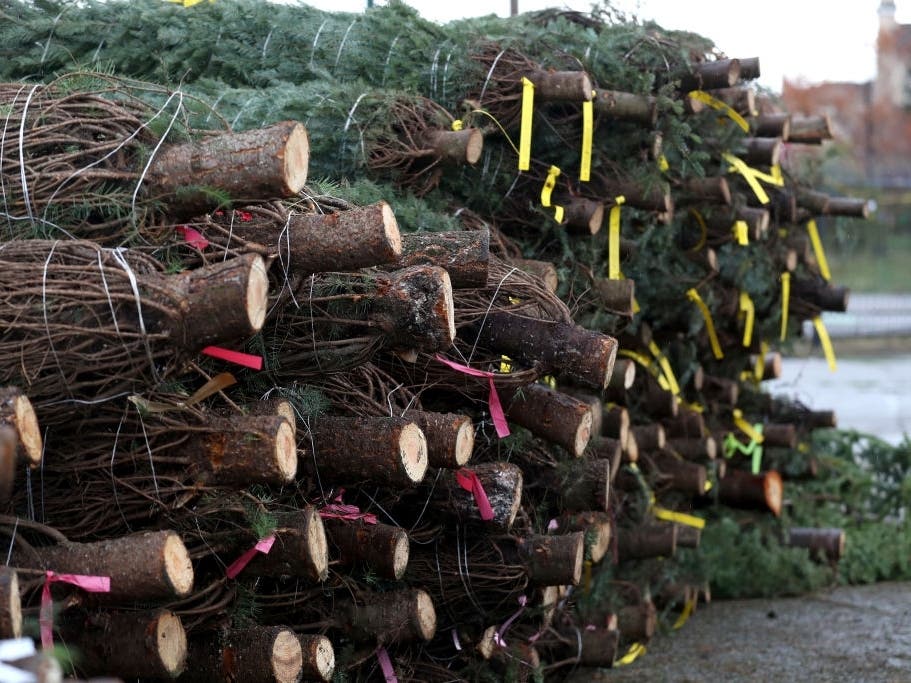Seasonal & Holidays
Knowing The Different Types Of Real Christmas Trees
Size, color, needle retention and sap production are just a few of the characteristics to consider when choosing a real Christmas tree.

ACROSS AMERICA — IF you're looking for a real Christmas tree this year but aren't sure which one would be best for you and your family, we're here to help.
A lot of consideration goes into choosing the perfect real Christmas tree. Size, color, needle retention, sap production — all are important factors to keep in mind when selecting the right tree.
To help you get started, here are some of the most popular types of real Christmas trees and their key characteristics, according to the National Christmas Tree Association and PickYourOwnChristmasTree.org.
Find out what's happening in Across Americawith free, real-time updates from Patch.
Firs
Fir trees are the traditional Christmas tree for most Americans because they have the most sought-after qualities: great fragrance, short sturdy needles and branches, and good needle retention. If kept watered and in a cooler room, firs will hold needles through Christmas.
Here are the popular types of fir Christmas trees:
Find out what's happening in Across Americawith free, real-time updates from Patch.
- Balsam fir: This is the traditional Christmas tree most Americans had growing up. With its short, flat, long-lasting needles that are rounded at the tip, balsams are fragrant with a dark green color and a silvery cast.
- Fraser fir: This tree boasts good needle retention, strong branches and a nice scent. Fraser firs are are dark blue-green in color.
- Canaan fir: Similar to the other Eastern firs, the Canaan has short, soft needles that are dark green with a silvery blue underside. This tree combines the strong fragrance of the balsam fir with the better needle retention of the fraser fir.
- Douglas fir: The needles of this tree have one of the best aromas among Christmas trees when crushed. One of the top Christmas tree species in the United States, Douglas fir have a blue to dark green color and good conical shape.
- Concolor fir: This tree has small, narrow needles that occur in rows. They have good foliage color, good needle retention, and a pleasing shape and aroma.
- Noble fir: The needles on this tree turn upward, exposing the lower branches. Known for its beauty, the noble fir keeps for a long time, and its stiff branches make it a good tree for heavy ornaments.
Pines
Pines trees are a solid compromise between firs and cypress trees. Not only do they look and smell more like a traditional Christmas tree, they are easily pruned to a good shape in the field, boast good needle retention and grow well in warmer climates.
However, pines can produce a lot of sap and become sticky. In hot climates, pines tend to be the tree of choice.
Here are some of the more popular types of pine Christmas trees:
- White pine: The largest pine in the United States, the white pine has soft, flexible needles and is blue-green in color. White pines have good needle retention, but have little aroma. They aren’t recommended for heavy ornaments.
- Virginia pine: The branches on this tree are stout, woody and respond well to trimming. The tree is small to medium in size and its foliage becomes extremely dense. Aside from being a good nesting site for woodpeckers, the Virginia pine continues to be one of the more popular Christmas trees in the South.
- Afghan pine: These trees have a mild fragrance and soft, short needles with sturdy branches. Typically grown in Texas, these trees are native to Afghanistan, Russia and Pakistan.
- Austrian pine: With long, dark green needles that retain well, this tree boasts a moderate fragrance and is native to Austria, northern Italy and the southern Mediterranean. It was introduced to the United States in 1759.
Other Trees
White spruce: With its short, stiff needles, this tree is excellent for ornaments. The trees are blue-green to green in color, have excellent foliage color and a good, natural shape. Needle retention is best in a white spruce, but needles have a bad aroma when crushed.
Colorado blue spruce: This tree has good symmetrical form, retains needles well and has an attractive blue foliage.
Leyland cypress: The most popular Christmas tree in the U.S. Southeast, the Leyland cypress is dark green-gray in color and has very little aroma. Because it's neither pine nor fir, the Leyland cypress does not produce sap; therefore, it is a great fit for people with allergies.
Get more local news delivered straight to your inbox. Sign up for free Patch newsletters and alerts.